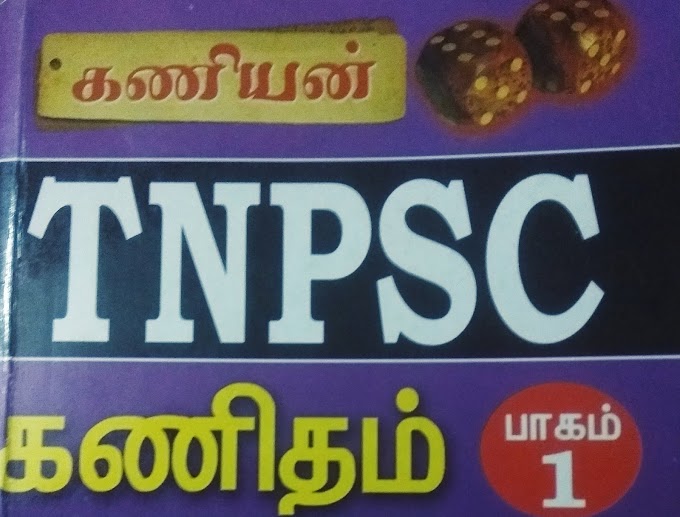NOVEMBER MONTH IMPORTANT CURRENT AFFAIRS IN IAS, TNPSC, RRB, SSC EXAMS
1.)International Day For the Elimination of Violence against Women
- The International Day for the Elimination of Violence Against Women was celebrated worldwide on Novembe 25.
- This year’s theme is Orange the World: #HearMeToo, and as in previous years, the colour orange is used to represent a brighter future, free from violence against women and girls as a unifying theme running through its global activities, while the hashtag is encouraged to amplify the message of survivors and activists and to put them at the centre of the conversation and response.
- It also includes 16 Days of Activism against gender-based violence which is an international initiative that takes place each year. It commences on November 25, and continues till the International Day of Human Rights on December 10.
- Violence against women and girls is one of the most widespread, persistent, and devastating human rights violations in our world today and remains largely unreported due to the impunity, silence, stigma and shame surrounding it.
- Despite the adoption of CEDAW by the UN General Assembly in 1979, violence against women and girls remains a pervasive problem worldwide.
2.)Air Pollution Problem
- The World Health Organization’s Air Pollution and Child Health: Prescribing Clean Air report has been released.
- It is the general notion that India’s air problem is mainly due to urban problem. However, the report underlines the fact that this is not so. As it notes, “the main sources of air pollution may vary from urban to rural areas, but no area is, strictly speaking, safer.”
- The report found India had almost 61,000 deaths of children under five years due to ambient and household pollution. This is the most deaths globally in this age bracket.
- For other children who are exposed to dangerous levels of air pollution in India—which is 98% or so of them—the issue links to a number of long-term physical and mental developmental problems.
- It is also connected with the country’s shifting epidemiological profile, feeding into the rise of noncommunicable diseases such as cardiovascular conditions and cancer.
- And contrary to popular perception, this is as much or more a rural issue; of the 1.1 million air pollution-related deaths in 2015, 75% were in rural India.
3.)Choked By Smog: On Air Pollution
- Air pollution is choking several cities in the northern States once again, as changes in temperature and slowing winds trap soot, dust and fine particulate matter.
- The National Capital Region is badly hit, as the burning of agricultural residue in Punjab and Haryana is releasing large volumes of smoke containing, among other pollutants, highly damaging fine particulates, or PM2.5.
- The problem is aggravated by the burning of urban waste, diesel soot, vehicular exhaust, road and construction dust, and power generation.
- Although India has nine of the 10 most polluted cities in the world, it has not taken consistent action on pollution.
- Tens of millions live with ambient air quality that is well short of even the relaxed parameters the country has set for fine particulates, compared with those of the World Health Organization.
- The UN Environment Programme’s recent report titled ‘Air Pollution in Asia and the Pacific: Science-Based Solutions’ has sounded a warning, pointing out that only 8% of the population in the countries of the region get to breathe air of acceptable quality.
- Delhi Air Pollution
- Although less than previous year, farmers of Punjab and Haryana continue to burn stubble despite a court order and the visible consequences it has on Delhi's air quality.
- Thanks to the promotion of farm machinery backed by financial assistance by government and awareness programmes, there is a visible reduction in the volume of post-harvest stubbleburning in Punjab and Haryana this year.
- But still, a significant chunk of farmers continue to burn the stubble, even after they understand how it contributes to Delhi's air pollution.
4.)Monogenic Diabetes
- A National Monogenic Diabetes Study Group has been formed to identify cases of monogenic diabetes across the country.
- Supported by the Indian Council of Medical Research (ICMR), the Madras Diabetes Research Foundation (MDRF), and Dr. Mohan’s Diabetes Specialities Centre (DMDSC) will be the national coordinating centre for the study group.
- Monogenic diabetes is a group of disorders where mutation of a single gene causes diabetes, the three commonest forms being - Maturity Onset Diabetes of the Young (MODY), Neonatal Diabetes Mellitus (NDM) and Congenital Hypoglycaemia,
- It is usually passed on in an autosomal dominant gene (a sex independent gene that’s inherited from one of the parents). This means only one copy of the mutation is needed to develop diabetes. There is usually a strong family history of diabetes and in multiple generations. Diagnosis, therefore, involves genetic testing for these diabetes-causing gene mutations that disrupt insulin production.
- Patients are also usually antibody negative. Once treatment for the diabetes begins, the antibodies usually resolve.
5.)World Toilet Day
- Recently World Toilet Day was celebrated on 19th November across the world. It was established by the World Toilet Organization in 2001. Twelve years later, the UN General Assembly declared World Toilet Day an official UN day in 2013.
- The theme for this year is ‘When Nature Calls’. It implies when nature calls, we need a toilet, but billions of people don’t have one. This means human faeces, on a massive scale are not being captured or treated – turning the environment into an open sewer.
- Sustainable Development Goal (SDG) 6 aims to ensure availability and sustainable management of sanitation and water for all by 2030. World Toilet Day exists to inform, engage and inspire people to take action toward achieving this goal.
- Today, 4.5 billion people live without safely managed sanitation and 892 million people still practise open defecation.
- The impact of exposure to human faeces on this scale has a devastating impact upon public health, living conditions, nutrition, education and economic productivity across the world.
- 20% of schools worldwide do not provide any toilet facilities - a particular problem for girls during menstruation.
6.)Review of IBC’s Progress
- As per the Corporate Affairs Secretary, the insolvency and Bankruptcy Code (IBC) has catalyzed the recovery of around Rs. 3 lakh crore from various default cases, directly or indirectly, since its inception in 2016.
- Lowest Recovery: The lowest recovery rate of 6 % was seen in the case of Synergies Doorey Automotive in which financial creditors could recover only Rs 54.7 crore out of total claims of Rs 972.2 crore.
- Average Recovery: The average recovery in the 60 odd insolvency cases that have seen resolution over the past two years has been to the tune of 46 %, against just 26 % under the earlier Board for Industrial and Financial Reconstruction (BIFR) regime. Thus, highlighting the effectiveness of the nascent insolvency framework.
- Total Recovery: The resolution of the 60 cases have so far yielded around Rs 71,000 crore, some Rs 50,000 crore is expected to be recovered from Essar Steel, which is at the advanced stage of being resolved.
- Passport holders with “non-Emigration Check Required (non-ECR)” status will soon have to get themselves registered with the Ministry of External Affairs before taking up jobs abroad.
- The rule, which takes effect on 1st January 2019, applies to jobs in 18 countries, including the six GCC nations, which have the largest number of expats.
- The non-ECR category of passengers include Indians paying income tax and those with educational qualification above matriculation.
- As of now only ECR category passport holders were required to get emigration clearance from the office of the Protector of Emigrants to seek employment abroad. Now all those seeking employment in the said countries will have to register online and those failing to register at least 24 hours prior to actual departure will be off-loaded at the airports.
- Launched in 2015, e-Migrate is an online registration system for foreign employers to recruit Indian workers. Indian citizens with ECR stamp on their passports have to get their job offers cleared through the e-Migrate system.
- Prime Minister has announced 12 measures under the MSME support and outreach programme to boost the Micro, Small and Medium Enterprises (MSME) sector, including a portal that would enable the units to get a loan upto Rs. 1 Crore in just 59 minutes.
- The programme will run for 100 days covering 100 districts.
- These measures come when the government is engaged with banks to address the liquidity crunch in the markets.
- The MSME sector accounts for an estimated 30 % of country’s GDP, 45 % of its manufacturing output, and 40 % of merchandise exports.
- And given that MSMEs have contributed least to the banking system’s non-performing assets crisis, even while disproportionately bearing the brunt of demonetization and GST, there is also a moral case to support the sector.
- PM laid the foundation stone for City Gas Distribution (CGD) projects in 129 districts of 18 States that were awarded in the recently concluded bid round.
- India consumed 142 million standard cubic meters per day of natural gas in the fiscal year ending March 31, 2018 and is slated to rise 2.5 times in next decade
- Gas Infra: Gas infrastructure is being strengthened through a nationwide gas grid, city gas distribution projects, and raising liquefied natural gas (LNG) import capacity.
- Gas Distribution Network: The government will more than double city gas networks to 400 districts, quadruple piped cooking gas connections to households to 2 crore, and also set up 10,000 CNG dispensing stations.
- New Biddings: The government also launched the 10th round of bidding for award of city gas licenses in 124 new districts. Once 10th round is completed, natural gas as fuel will cover 400 districts and 70 per cent population. •
- Incentive for Investment: The Domestic gas prices have been linked to global gas market and to increase domestic production, marketing and pricing freedom has been given.
- Independent Operation & Exchange: An independent transport operator and a trading exchange are being developed to provide transparency in operations of pipelines and price discovery.
- Connecting Northeast India: Over Rs 22,000 crore is being spent on laying new pipelines that will transport natural gas to unconnected eastern states of Bihar, Odisha and West Bengal and further to northeastern states, making available environment friendly fuel for industry and domestic use. Biogas: To promote clean energy, 5,000 compressed biogas plants will be set up in five years to convert agri-waste into bio-CNG. This would not only address the problem of agri-residue, but also increase farmer income.
- Ethanol: Besides, 12 modern bio-refineries to convert biomass into fuel are being set up at an investment of Rs 10,000 crore. The blending of sugarcane-extracted ethanol in petrol has jumped four times since 2014 and the target is to take the doping to around 10 per cent level from current 3- 4 per cent.
- Environment-Friendly Fuel In Energy Mix: With the push towards a gas-based economy, the share of environment-friendly fuel in the energy basket will be increased from 6.2 % to 15 % by 2030.
- NITI Aayog has argued against any abrupt restrictions on agriculture exports to meet domestic demand.
- Currently, India exports a large number of agriculture commodities annually. However, this is subject to stable domestic market, which means if demand goes up or prices soar in the domestic market, the government immediately stops exports mid-way as a result of which India is rarely seen as a consistent supplier of agri-commodities to overseas destinations.
- India’s share in global exports of agriculture products rose from 1% a few years ago to 2.2% in 2016. It is currently ranked 9th among exporters globally
Online Test Series
Other Related Articles
TNPSC Related Articles







